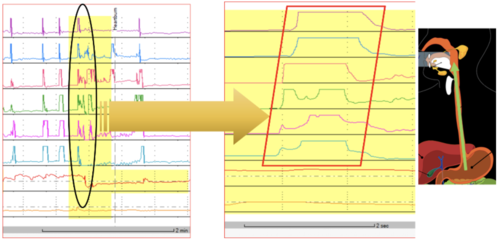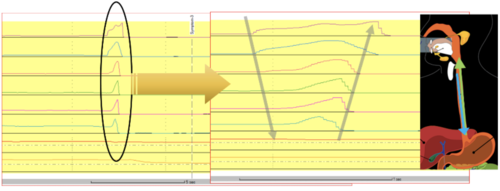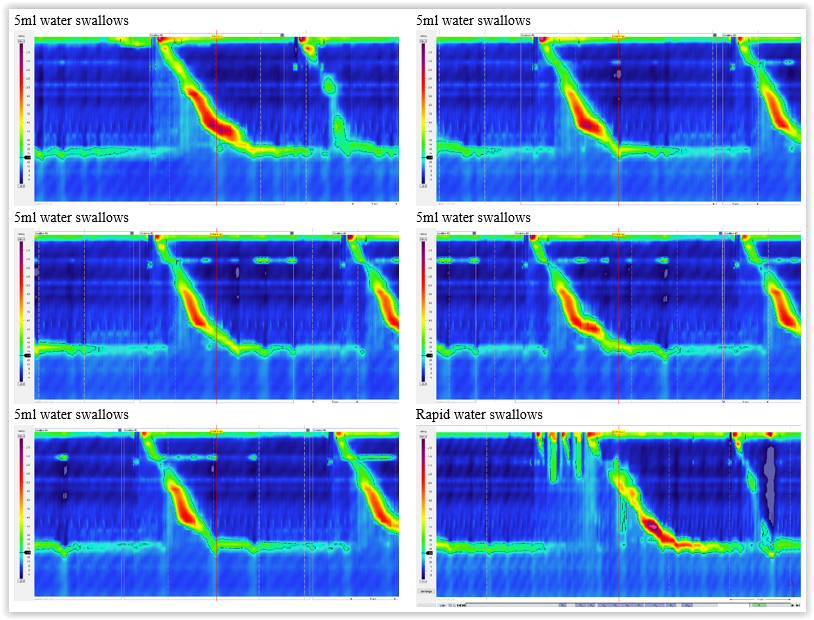Do you have patients with recurrent belching that cannot be explained by physiological changes? If so, the patient may be suffering from supragastric belching, a behavioural condition which may benefit from oesophageal biofeedback therapy.
So, firstly let’s look at this condition and how it manifests itself.
As we are all aware, belching is normal! It is a physiological process and is the body’s way of expelling excess air from your upper digestive tract. Most belching is caused by swallowing too much air. Often this air never even reaches the stomach but accumulates in the oesophagus. Intake of too much air can occur when eating or drinking too quickly, talking while eating, chewing gum, drinking carbonated beverages or smoking. Acid reflux or gastroesophageal reflux disease (GORD) can sometimes cause excessive belching by promoting increased swallowing.
Although belching is a normal bodily function, when it becomes excessive, it can cause embarrassment and have an impact of quality of life. Understanding the cause whether it be lifestyle, physiological or behavioural is critical to identifying the most appropriate treatment option.
Where patients complain of repeated belching episodes where belches may occur every few seconds for varying lengths of time, this is what is called supragastric belching. This is a behavioural condition and is often associated with anxiety, stress and eating disorders.
Supragastric belching can sub-classified as follows:
- Proactive – behavioural
- Reactive – a reflux event precedes the belching or following a sensation of symptoms
Approximately 82% of patients presenting with symptoms exhibit proactive supragastric belching.
Impedance monitoring is the only method to diagnose supragastric belching with ambulatory impedance monitoring being the preferred method. An increase in impedance = air in the oesophagus.


A diagnosis of supragastric belching does NOT necessitate treating it! There are a number of questions that need to be asked:
- Is the supragastric belching proactive?
- Does supragastric belching trigger abnormal reflux?
- Does supragastric belching correlate with the patient’s main symptoms?
If the answer is proactive, then the patient may benefit from oesophageal biofeedback therapy.
Oesophageal Biofeedback Therapy
Supragastric belching may benefit from psychological therapy to unlearn or interrupt the acquired behaviour.
Dedicated cognitive behaviour therapy (CBT) or speech therapy have established efficacy. Speech therapy improves the severity of belching symptoms, whereas CBT reduces the number of supragastric belches. These two treatments share the common concept consisting of cognitive and behavioural components.
Typically, patients will have an initial appointment, where the mechanism of supragastric belching is explained so that patients can understand that it is a subconscious but deliberate behaviour. Any warning signals (premonitory sensations) which cause patients to commence belching. In most cases, throat, chest or abdominal discomfort are identified as a warning signal, which can be used for a cue to start exercise to stop supragastric belching.
In the behavioural part of the therapy, patients are instructed in the use of (1) diaphragmatic breathing and (2) mouth opening/tongue position to make it physically impossible to perform supragastric belching.
Diaphragmatic breathing involves inhaling and exhaling, 3 seconds on each phase, moving the abdominal wall instead of the thoracic wall.


Mouth opening/tongue position exercises need to be completed at least twice a day for 3 – 5 minutes in the supine, sitting or standing position. Ideally the aim is to exercise as often as possible, especially when noticing a warning signal or urge to do supragastric belches.
These exercises need to be performed on a regular basis for a period of no less than eight weeks. After this time, they return for a 2nd appointment where they are re-assessed and under a 24-hour pH/impedance test. This testing provides objective measurements following the exercise regime.
The effectiveness of oesophageal biofeedback therapy is measured by pre and post therapy objective and subjective outcomes
- Objective
- The number of supragastric belches
- Oesophageal acid exposure time (AET)
- The proportion of AET related to supragastric belches
- Reflux-symptom correlation
- Subjective
- Patient-reported questionnaires
Any improvement >50% against the pre-oesophageal feedback therapy might be considered significant (no consensus).
Real Example
A patient presented with symptoms of belching and hiccups. Initial pH-impedance testing detected supragastric belching.

Oesophageal biofeedback therapy was performed. At the second visit, the patient denied any or significant improvement, but a repeat pH-impedance showed a different result – significant improvement observed.

The correct use of oesophageal biofeedback therapy can convert a significant number of functional GI disorders to treatable GI disorders.
It can also help with other behavioural phenomena:
- Aerophagia
- Rumination syndrome
- Intractable hiccups.










